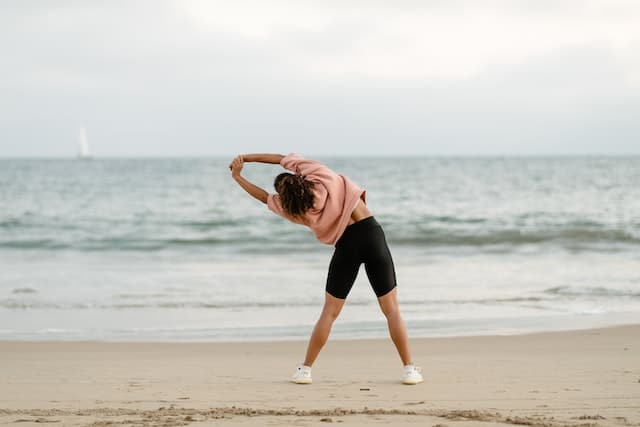Your posture matters, and not just for your spine. Posture is how you hold your body, whether while still or during movement, and research shows that posture impacts everything from your spinal health to physical appearance and even attractiveness.

So how does your posture affect your beach body? Turns out, poor posture can make you look shorter and bigger than you really are. Fortunately, there are a few ways you can improve your posture and look your best when on the beach this summer. We’ve got a few tips for you here so you can hit the beach with confidence!
Avoid Hunching
When you hunch your shoulders, you appear shorter, and your stomach can stick out. Instead, stand up straight and keep your shoulders back. If you’ve been in the habit of hunching in the past, this can take some getting used to, and you may have to remind yourself not to hunch several times throughout the day.
Fortunately, there are a couple exercises you can do to avoid hunching.
- Use a foam roller. Use a 24–36-inch length foam roller with a 6-inch diameter and place it on the floor, then lay down on your back so that you are on top of the roller with your spine along the length of the roller.
Use a towel or a straight object to grip with your hands, keeping them about shoulder-width apart, and reach your arms over your head and to the floor behind your head, then back again. You can also move your arms out and upward like you are making a snow angel (no towel needed for this variation).
These exercises strengthen the muscles that support your head and neck so you can avoid hunching.
- Try chest-opening exercises. There are many different chest-opening exercises you can try. One is to make your body into a Y shape—while standing and keeping your feet hip-width apart, reach your arms up, keeping your palms open and facing away from you, and hold your arms to make a V shape.
Next, pull your arms and shoulders back slightly, keeping your core muscles activated and tight, and feel a stretch in the chest, back, and shoulders, keeping your arms in the same position. Hold for a few seconds before releasing.
Keep Your Head Above Your Shoulders
Instead of holding your head forward, try to keep your head above your shoulders. There are a few exercises that can help you keep your head in the proper position to alleviate neck pain and encourage proper posture.
- Chin retractions. These are simple exercises you can do just about anywhere. First, make sure you have proper spinal posture (no hunching!), then keep your eyes on an object at eye level to ensure your head doesn’t move too much. Place a finger or two on your chin, then move your head back away from your fingers, and come back again.
- Back stretches. Another great exercise to stretch the back and improve head posture is the “W” back exercise. Bend your arms and hold them at your side so your torso is now in the shape of a W, keeping your palms out and facing away from you. Keeping your head straight, gently pull your shoulder blades together and down, feeling a stretch in the upper back.
You can also think of your head being lifted by a string, and this will help you naturally stand with your shoulders back and your head above your shoulders to avoid hunching.
Not only do these exercises help facilitate proper posture—they can also help alleviate neck pain that is often the result of holding your head forward and putting too much weight on the upper spine.
Improve Spinal Posture and Glutes
Exercises that help lengthen the hip flexors will give you a better anterior tilt, leading to an increased lower back curve and more prominent glutes. Some exercises you can do to improve spinal posture and your glutes include:
- Lunges. To do a lunge, keep your torso straight and your core muscles tight. Then, bend one of your knees and lower your body to the ground so you are essentially in a kneeling position, stretching your other leg behind you with your knee almost touching the ground.
- Pelvic tilt. Lie on your back on the floor but keep your knees bent and your feet flat on the ground. Activating your core muscles, tilt your pelvis up so that your buttocks and lower back are off the ground. Hold this for a few seconds, then repeat.
- Psoas stretch. The psoas muscle can be responsible for both leg and lower back pain. Fortunately, by stretching this muscle, you can relieve pain and improve your posture. To do the stretch, lay on your stomach on the floor and bend your knees, keeping your legs up against the wall. Then, lift your chest and support your weight on your elbows. For a deeper stretch, you can support your weight on your palms with your elbows out at your sides.
Get a Better Beach Body With Chiropractic Care
If you’ve struggled with chronic discomfort as a result of poor posture, chiropractic care can help you improve your posture and reduce your pain so you can fully enjoy your time at the beach this summer. Contact Ward Chiropractic for a free consultation today!

